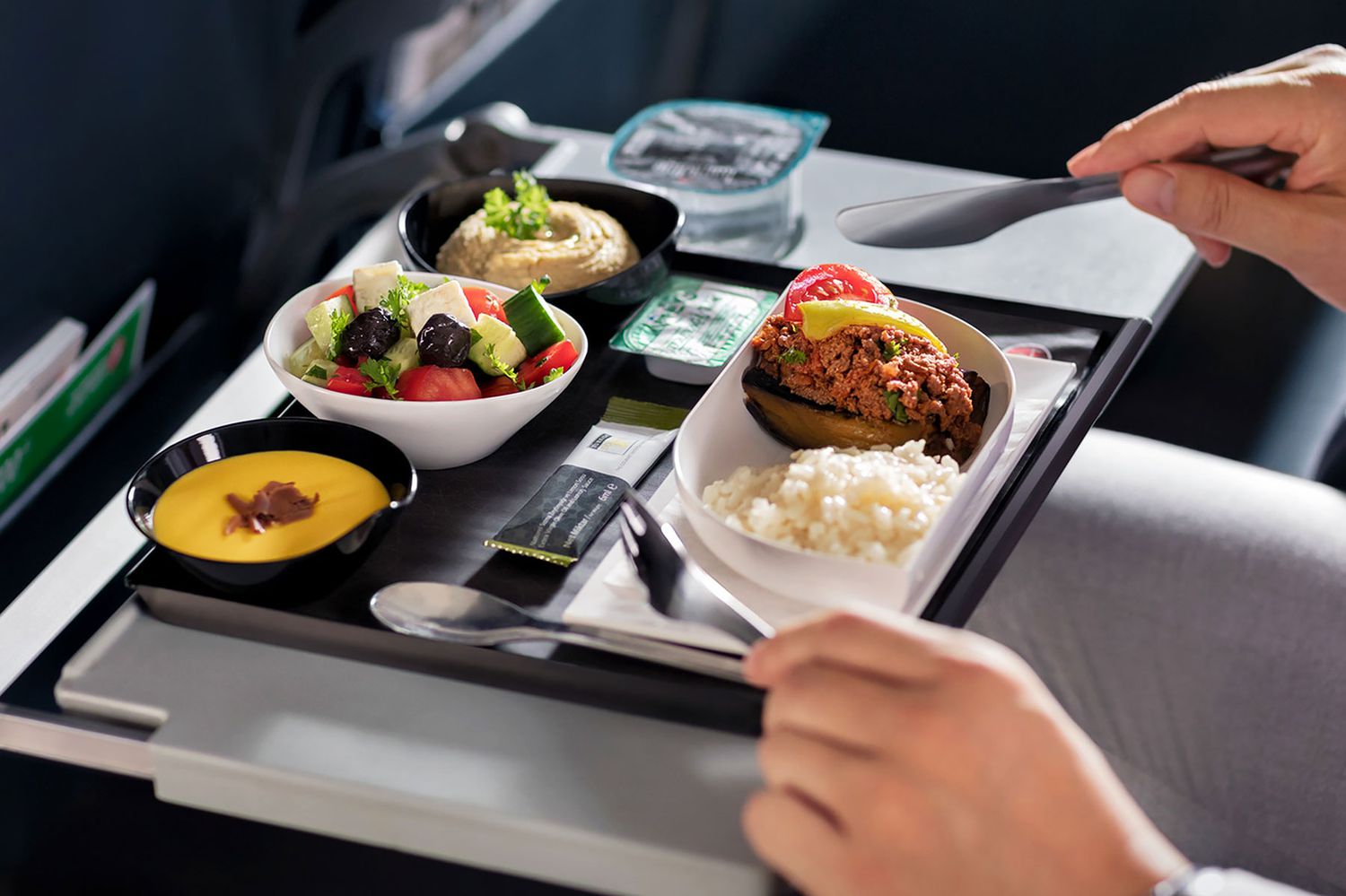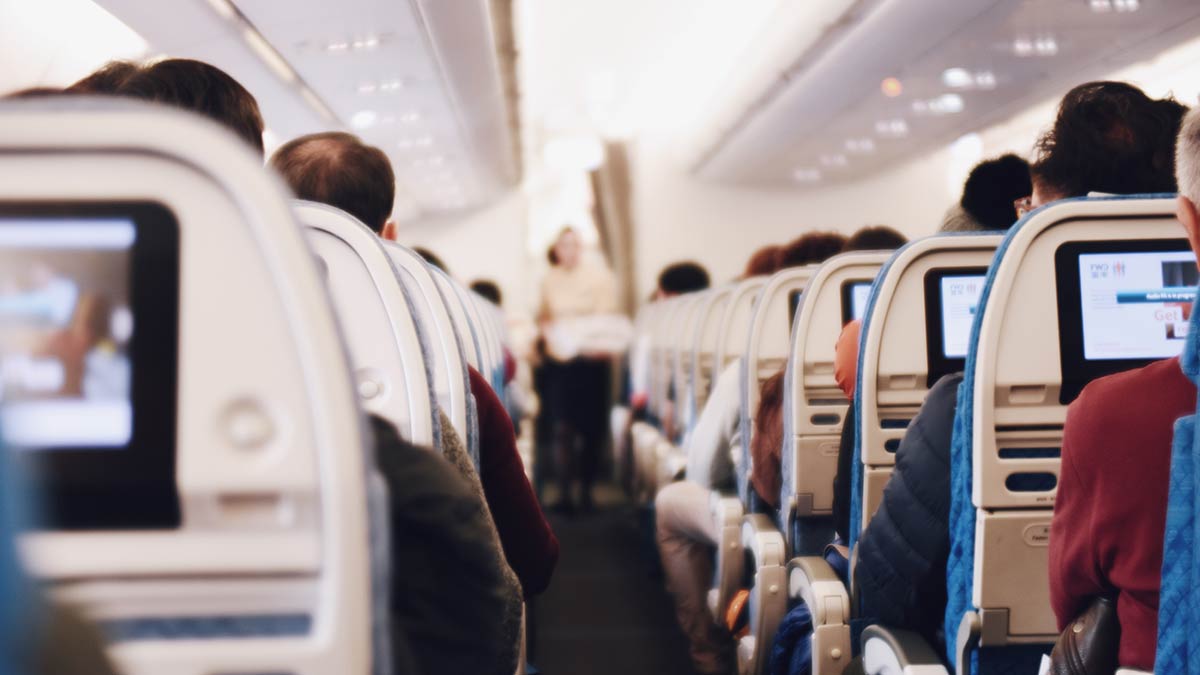In-Flight Meals Tips

Airplane meals can sometimes be hit or miss, but you can make the most of your flight by following a few key guidelines. First off, choose foods that are moist and packed full of flavor.
Plan ahead and preorder your meal before boarding to ensure sufficient supplies for all, with special dietary needs meals often being prioritized over others. Cathay Pacific offers great flight meals but you still need to remember the following.
Pack a Thermos
As airlines reduce their food and beverage service, bringing your own is becoming even more essential to save both money and eat healthily on flights.
Thermoses can be an ideal way to transport solid foods during flights. So long as it does not contain liquid and fits within your luggage capacity, TSA will allow it through security. A thermos is especially helpful for travelers with specific dietary restrictions who may struggle to find food that fulfills these criteria at airports.
Contrary to other containers, thermoses are opaque and will not show up on an X-ray scanner. However, the lid must remain securely fastened during your flight to prevent it from opening unexpectedly at high speeds; having some tape handy may prove handy in doing this task.
Though this tip might seem redundant, it’s worth remembering that pressure builds up inside of thermoses during flights and that opening it too quickly can lead to the contents spilling out all over your tray table, creating quite the mess! This tip becomes especially relevant when flying long-haul international routes which pass through several time zones and thus cause temperatures on board to fluctuate throughout. You should adjust accordingly in order to keep yourself comfortable throughout.
Bring Your Own Cutlery Set
Most flights provide plastic cutlery, but you can avoid this waste by bringing your own set. Although this might seem like a small step, doing this will significantly decrease how much plastic waste is created during travels if you eat at food stalls or casual-style restaurants frequently.
There are various eco-friendly, reusable cutlery sets designed specifically for travel on the market that are TSA compliant and perfect for road trips, camping trips and work lunches. These kits go beyond what one may envision when thinking of Boy Scout-style sets of forks and spoons being carried in hand luggage (they also make an excellent option should any of your coworkers forget their own utensils!).
Reusable travel utensils have one major drawback compared with disposable ones: they must be cleaned between meals. But this shouldn’t be an issue for most travellers as these utensil sets come equipped with small protective cases that will keep them from coming in contact with anything dirty while packed into your suitcase – available both as metal and wood options, including one equipped with chopsticks!
Bring a Reusable Water Bottle
Reusable water bottles are an indispensable travel essential, especially if you want to reduce your environmental impact. Available at airport stores and duty-free shops, but usually cheaper online. When purchasing one for flights, make sure it features an insulated design, durable construction and easy portability; consider choosing models made from recycled plastic for even greater environmental benefit.
At TSA security checkpoints, it’s good news: empty reusable water bottles can pass through security without issue. According to their three-1-1 rules, travelers are limited in how many liquids, aerosols, pastes, or gels they can bring aboard flights; this helps prevent travellers from carrying dangerous liquids as well as reduce leaks or spills during flights.
Once through TSA screening, refill your reusable water bottle at any of the airport’s water fountains or bottle-filling stations nearby restrooms.
Hydration is crucial when traveling, particularly on flights due to low humidity levels and costly airport drink prices. A reusable water bottle from Thermos holds 32 ounces, providing plenty of hydration during your travels; its BPA-free Tritan material ensures safety, lightweightness, and durability – plus comes complete with an accessible loop-top lid!
Bring a Thermos of Miso Soup
Miso soup makes an ideal airplane food because you can enjoy it either cold or hot and its low sodium levels will help prevent dehydration caused by air travel. When making miso at home, slurrying the paste first will help it dissolve completely while seaweed adds an aromatic scent not found elsewhere in store-bought stock or store-bought broth. Furthermore, selecting high quality miso like that from South River Miso in Massachusetts ensures you enjoy maximum flavorful experiences when making the soup yourself.
Your Thermos should contain more than soup; consider packing other meals such as salad. Salad is one of the easiest flights meals to bring because it doesn’t need rewarmed and includes ingredients that won’t wilt, such as kale or shaved brussels sprouts. Be mindful when packing dressings – they must remain under the TSA carry-on limit of 3.4 ounces!
Glass thermoses are typically the most durable and aesthetically pleasing options; however, plastic models are still considered suitable. Make sure your thermos has a lid to prevent its contents from spilling over during pressure changes in flight – otherwise your meal might end up spilling all over the place!
Instant oatmeal in a thermos is also an option as long as it is uncooked or combined with milk; instant noodles should also be packed, though low-sodium brands are preferred to prevent further dehydration from air travel. Remember to declare any food brought into the United States from abroad (such as soup) with U.S. Customs and Border Protection (CBP).
Bring a Thermos of Oatmeal
Oatmeal is an easy, nutritious and satisfying flight meal you can bring from home or buy ready-to-eat packets of instant oatmeal from your carry-on luggage. Prepared oatmeal will pass through airport security without issue due to being solid rather than liquid based. Any leftover oatmeal in your bag at the end of the flight could make an excellent breakfast in your new destination!
Your homemade sandwich for an airplane meal could include greens such as kale, shaved brussels sprouts or cabbage that won’t disintegrate quickly like kale and hard-boiled eggs; with protein such as canned tuna salad (high in protein). Keep dressing separate to prevent an awkward situation at your seat.
An easy and delicious option is bringing along a container of cooked pasta and asking the flight attendant for hot water to heat it during mid-flight. Add cheese or vegetables as desired for a balanced meal to sustain you through to your destination.
Carrying in food to an airport is both cost-efficient and health-enhancing, giving your budget and health more security. Eating nutritiously will leave you feeling more alert, energized, and focused upon arrival at your destination. Just remember not to wait until it’s crunch time before starting preparation; that will only lead to chaos, rush and less-than-satisfactory results. Make a list of food you plan to pack for your flight at least 24 hours in advance and review it at least daily so there is time to purchase or prepare any necessary items.




